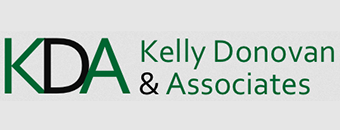You might have heard that sharing examples of your work could be helpful when you’re interviewing. But is it really a good idea? How do you decide whether to share?
In some professions—like journalism—sharing a portfolio of your work is a critical part of the hiring process and is usually part of the initial application process as a prerequisite to garnering an interview.
In many fields, however, it’s not that common to provide work samples. If you’re trying to decide whether to provide work samples, here are three things to consider.
1. Don’t share anything that you don’t have your employer’s or former employer’s permission to share (or reasonable confidence that it would be acceptable).
For example, don’t share anything that might be confidential, especially if the company in question is a competitor.
A good question to ask yourself is how your current or former boss, colleagues, and senior management would feel if they found out you provided the samples in question to another company. Even if you think there’s no way they could ever find out, why take the chance?
2. Think twice before doing actual work to create the sample without being compensated.
If a company wants to have you create something specifically for them to demonstrate your abilities, keep in mind that this could be an exploitative ploy to get work done for free.
An example would be a marketing plan you developed for a product similar to one the prospective employer will be launching. They might just decide to “borrow” your marketing plan and not bother to hire you.
You should probably be compensated if the work will be extensive. Do a careful analysis of how long you think the work will take, as well as the likelihood that the employer will simply use your outstanding work for their benefit, but without hiring you.
Sometimes a candidate will create a 30-60-90 day plan for an employer. This is a fairly reasonable request for an executive candidate. The document helps show that you’re ready to step into the new role and hit the ground running. However, only take the time to do this if the interview confirmed your interest in the position, you truly want to get an offer, and you believe the employer is sincere.
3. Think carefully before volunteering to provide samples.
If the interviewer hasn’t asked for work samples, don’t proactively volunteer to share work samples unless you truly have stellar samples you’re highly enthusiastic about sharing.
You might be thinking that a proactive offer to share samples will be a nice touch to mention in your post-interview thank-you note or to mention as you finish up an interview. But think carefully first. If you’re going to offer samples, you should assume that the interviewer will take you up on your offer. Make sure you’re prepared to follow through.
When in doubt, you could ask a trusted colleague for objective feedback on just how strong the work is. An outside perspective might be helpful, because it’s hard to evaluate your own work objectively.
If you’re being asked for samples rather than offering them proactively, it might be tricky if you don’t have relevant samples you’re really proud of. You could simply say that you don’t want to share them without permission (if that would be a believable answer).
This article first appeared on www.KellyDonovan.com










